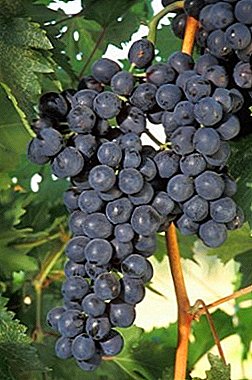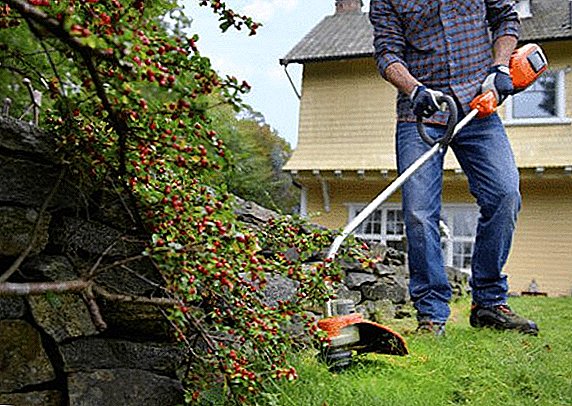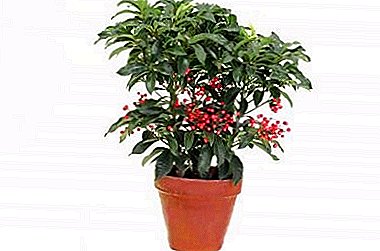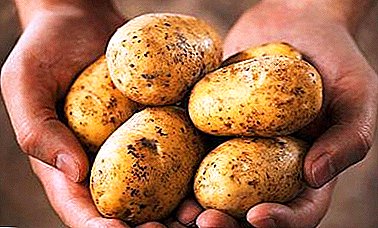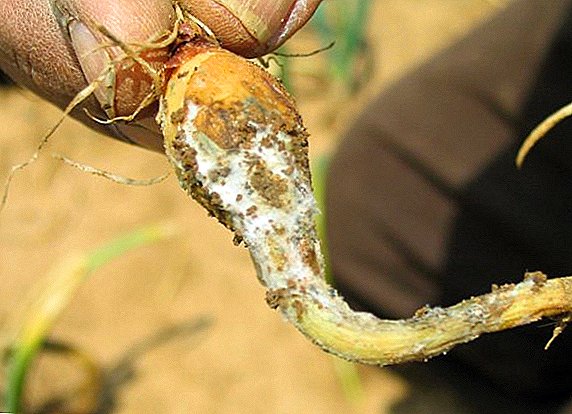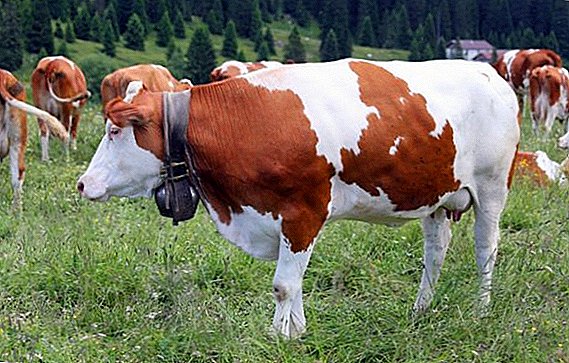 Diseases of the joints in cattle are not uncommon, most of them can be successfully treated, but there are also lethal cases. Today we consider the main diseases, methods of their treatment and prevention.
Diseases of the joints in cattle are not uncommon, most of them can be successfully treated, but there are also lethal cases. Today we consider the main diseases, methods of their treatment and prevention.
Diseases of the joints of cows
Diseases reduce the productivity of the animal, reduce its life. It is important to notice the signs of illness and take measures of treatment.
Arthritis
Arthritis is considered characteristic of cattle, there are two forms of illness: purulent and aseptic.
Purulent
Purulent arthritis occurs on the background of open dislocations, wounds in the joints.
Find out why the cow does not get up after calving.
Signs of
Suspected arthritis can be on the following factors:
- joint swelling;
- lameness;
- temperature rise;
- lethargy;
- the site of infection is hotter;
- heart rate rises;
- the animal avoids standing on the diseased limb;
- palpation observed pain;
- appearance of bone outgrowths;
- pus that forms in the joint cavity may leak through the wound on the skin.
 Treatment
Treatment At the first stage of treatment cold compresses are used, after them - thermal therapy. If a fibrous lesion is diagnosed, an electrophoresis procedure with lidaza solution is applied.
Important! Purulent arthritis in neglected forms is not amenable to treatment, in this case culling of the sick individual is carried out.
Aseptic
The aseptic type of arthritis is complicated by exudative (acute or chronic) form and productive (deforming and periarthritis).
There can be several causes:
- injuries (ligament rupture, sprain, bruise);
- strong load on the joints of the limbs;
- impaired metabolism;
- lack of minerals and vitamins.
Symptoms in many respects similar to purulent arthritis, laboratory and x-ray examinations are performed to make an accurate diagnosis.
Video: Calf Arthritis Treatment Treatment
After cooling the wound impose a pressure bandage, the animal must be at rest. Also shown are warming procedures - alcohol compresses. If the chronic form is diagnosed, the veterinarian performs a puncture to remove fluid from the joint capsule, followed by the introduction of Lugol's solution.
Did you know? During excavations in Egypt, archaeologists have found papyrus of more than three thousand years old, in which livestock diseases and their treatment are described in detail. There are even references to schools that trained doctors for animals.
Arthrosis
Most often arthrosis affects the hind limbs of young and adult individuals, the ailment is chronic.  The reasons:
The reasons:
- stall content;
- lack or insufficient amount of walking;
- metabolic disorders;
- low quality feed;
- reinforced stride.
Read more about what diseases can hurt cows and how to treat them.
Symptoms
Outwardly, there is no change in behavior or well-being, but lameness appears, the cows cannot stand up on their own. The initial stage does not change the joints, but the cartilage softens and breaks down over time. The particles of the destroyed cartilage thicken and ossify, which leads to the compaction of the joints, the loss of their flexibility. 
Treatment
In case of arthrosis, treatment with the drug "Kaforsen" is applied, which is administered intramuscularly in the dosage prescribed by the veterinarian. Irradiation procedures are carried out with a Sollux lamp every day or every other day; anti-inflammatory and accelerating tissue regeneration ointments are used (Vishnevsky, Divoprayd).
Learn more about these breeds of cows as Simmental, Belgian Blue, Dutch, Holstein, Ayrshire, Jersey, Aberdeen Angus, a black-and-white, Red Steppe, Kalmyk, Kahahsky, Highland, Yaroslavl, brown Latvian, Shorthorn and Kholmogory.
Bursitis
Bursitis is the formation of a small closed cavity of the stretched connective tissue.
The reasons:
- injuries (sprain, bruises);
- parasite infection;
- penetration into the open wound of fungal infection;
- hard bedding;
- short leash
 Symptoms:
Symptoms:- edema;
- soreness at the site of swelling;
- the formation of purulent bags;
- lameness;
- hardening of the skin at the site of injury.
Did you know? The initiator of the appearance in Russia of veterinary schools was Peter I. During his reign, the first teaching aids were published, schools were opened, which produced specialists for the treatment of livestock.Among the therapeutic measures are the following:
- alternating cold and warm compresses;
- alcohol dressings;
- the use of ointments "Chlorcin", Ichthyol;
- physiotherapy;
- opening purulent bags;
- removal of exudate from the bursa cavity;
- treatment of open wounds;
- after the removal of pain symptoms massage is applied with anti-inflammatory gels.
Video: treatment of bursitis in cows
Dislocation
Injuries of this kind can be acquired and congenital (during obstetric activity).
It will be helpful for you to read about the symptoms and treatment of cow diseases such as ketosis, actinomycosis, cysticercosis, leukemia, mastitis, udder edema, pasteurellosis and foot and mouth disease.
The reasons
Acquired dislocation occurs due to a fall, a disease that leads to muscle atrophy or paralysis. This can break ligaments or muscle tissue, rupture the joint capsule, blood vessels, skin.
Symptoms:
- unnatural position of the limbs;
- unwillingness to move;
- lethargy;
- joint swelling;
- inflammatory process (in case of rupture of the skin).
 Bilateral dislocation of a cow Treatment
Bilateral dislocation of a cow TreatmentA bandage fixing in one position is applied on the diseased area for at least two weeks.
Important! With open dislocation, treatment is not carried out, the animal is rejected.
Stretching
When stretching, the position of the bones is disturbed, most often in the joints of the lower limbs. In case of injury, ligament tears are possible, in the absence of treatment - an inflammatory process.
The reasons:
- sharp movements;
- injuries in transit;
- the fall;
- lack of movement;
- exhaustion.
 Symptoms:
Symptoms:- lameness;
- joint displacement;
- obstructed limb flexion;
- swelling at the site of injury;
- unwillingness to step on injured limb.
Treatment
Stretching diagnosed with x-ray apparatus. In uncomplicated situations, a cold compress and rest are recommended. In more difficult cases, a cold bandage is applied after the cold compress. After its removal, warming procedures are prescribed.
Injury
A close space can cause a bruise, another individual can cause injury, an animal can stumble, walking awkwardly, falling.
Symptoms:
- bruise;
- swelling;
- soreness when moving;
- lameness;
- fever, lack of appetite.
 Bruise of a joint in a cow Treatment
Bruise of a joint in a cow TreatmentTo relieve pain, a cold compress and a pressure bandage are used to stop possible subcutaneous lymph or bleeding. In the absence of pronounced hematomas, you can apply heat and paraffin therapy, as well as electrophoresis using Minin lamps.
If there are large hematomas, the procedures are not carried out in order not to provoke infection of the damaged tissues. To relieve pain and reduce swelling, injections of novocaine 0.25% (1 ml of substance / 1 kg of weight) are used.
Prevention of diseases of the joints of cattle
The main preventive measures - attentive care and quality livestock.
In addition, you should follow these rules:
- When arranging a barn, enough space should be allocated for each individual.
- With tethered content, the length of the leash should not limit the movement of the animal.
- It is undesirable to have high thresholds, wobbly steps.
- The exit on the paddock should be organized so as not to create a crush.
- The required amount of vitamins and minerals is added to the diet.
- Feed used only high quality.
- Walking the animals should last at least three hours a day. Cows and calves should receive a sufficient amount of ultraviolet radiation and fresh air.
- Mandatory compliance with hygiene standards.

When keeping large animals, there is always a risk of injury and subsequent joint disease. To avoid this, rational planning of the premises for cows, constant inspection of animals for domestic injuries, and regular veterinary examination of the herd will help.


